
10 standout fashion collections from RISD Apparel Design 2018 graduates
A giant boxy jacket and explorations of Mexican witchcraft were among the best looks at this year's Rhode Island School of Design graduate fashion show.
The Collection 18 catwalk featured the work of graduates from the RISD Apparel Design programme. It took place at Spring Studios in Manhattan on 12 September 2018, to coincide with New York Fashion Week, which ran from 6 to 14 September 2018.
The designers began their collections with the aim to capture perfume or scent in their garments, but ended up with vastly different finishes. A recurring theme was the abstraction of tailored suits, which involved oversized designs to distort silhouettes, and designs for "in-between genders".
Here are 10 standout collections from the show:
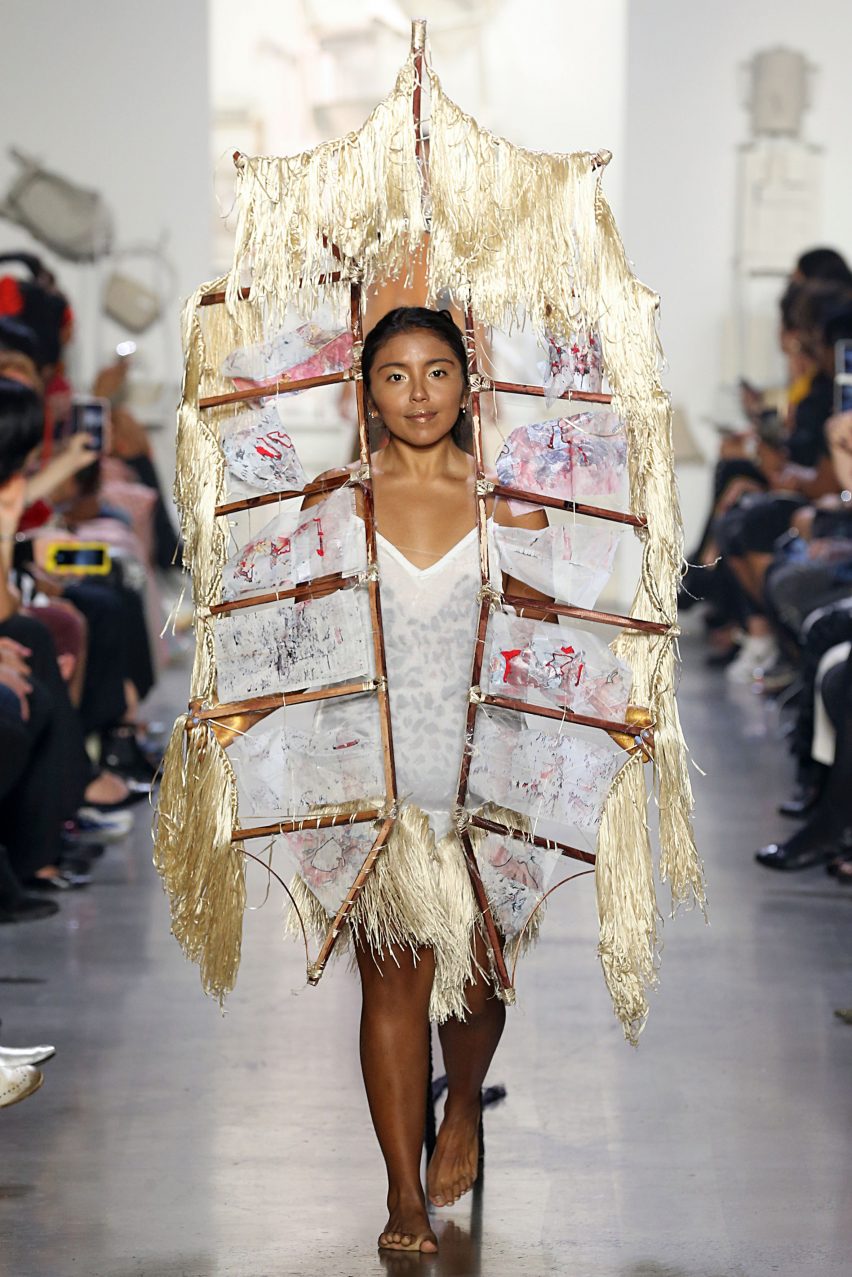
Maya Ortiz
An exploration of witchery and Catholicism in Mexico resulted in Maya Ortiz's Brujas y Raices collection, which included a range of materials like tassles, threads and satin, paired with religious images, and gold body paint.
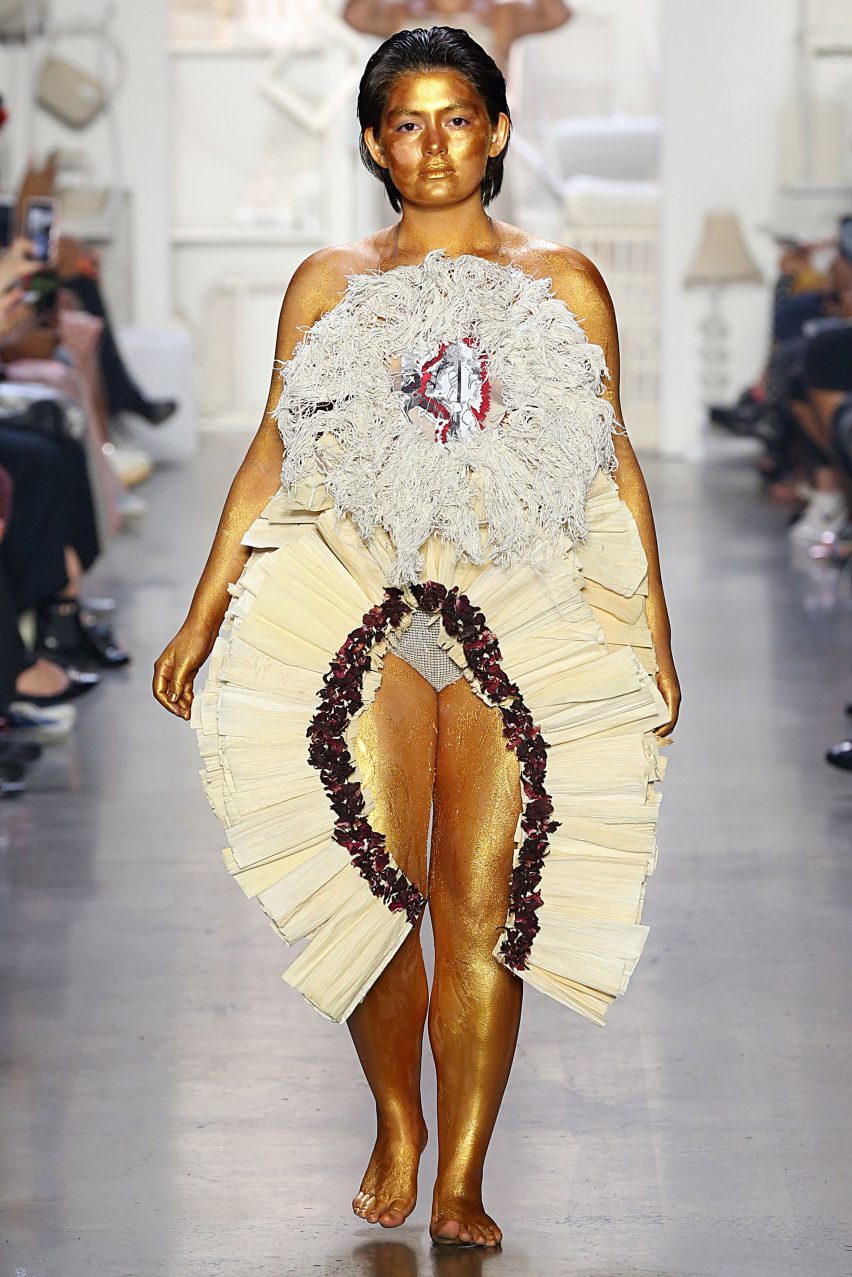
Most of the seven female models also carried large headdresses, varying in shapes from a spiky design, a tall wooden structure dressed in fabric and a triangular frame wrapped with taught material.
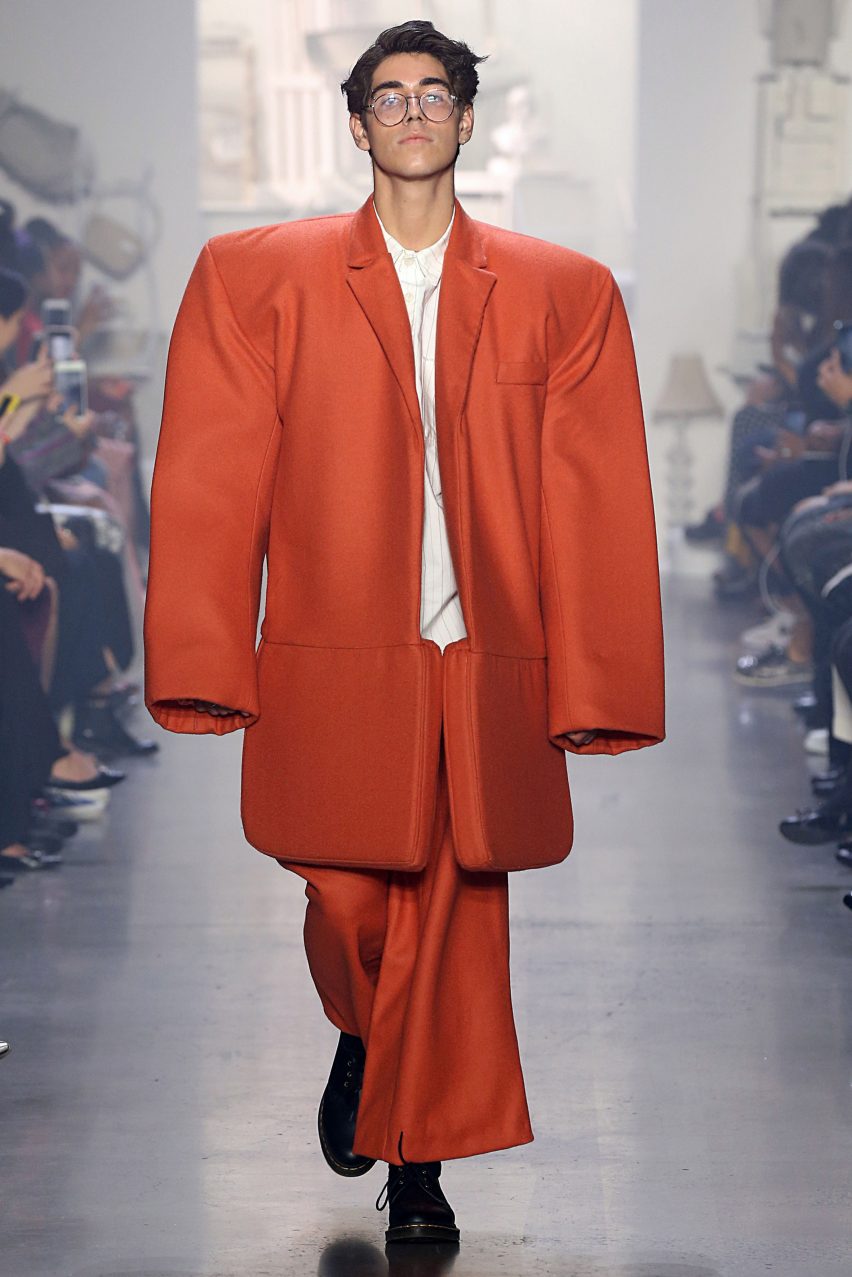
Erica Kim
Erica Kim's huge red jacket, with proportions that drowned the model, recalled a similarly oversized suit made famous by rapper Kanye West in a recent music video.
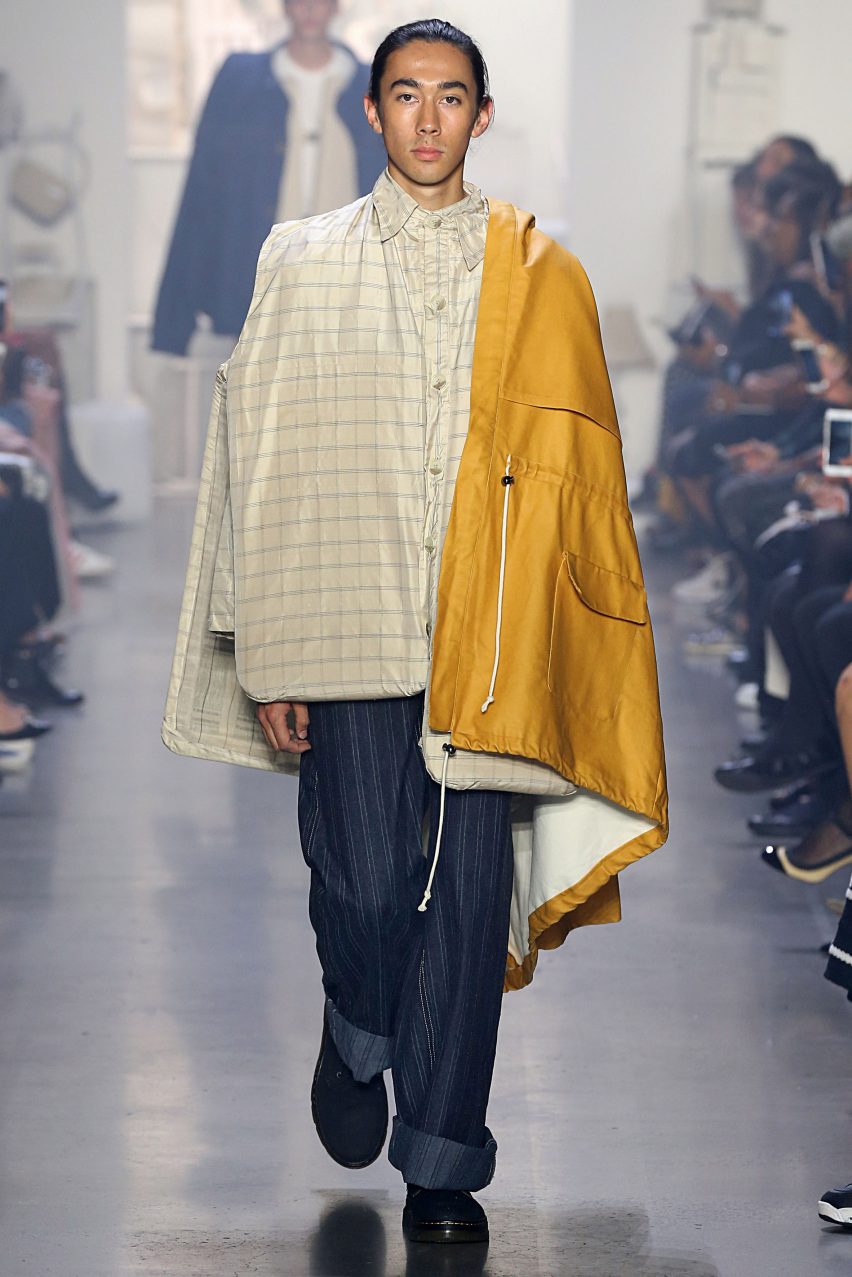
Her other designs continued this play on tailoring, with pillowy vests, trousers hemmed with wood, and a quilted two-piece completing her collection of "garment-like furniture and furniture-like garments".
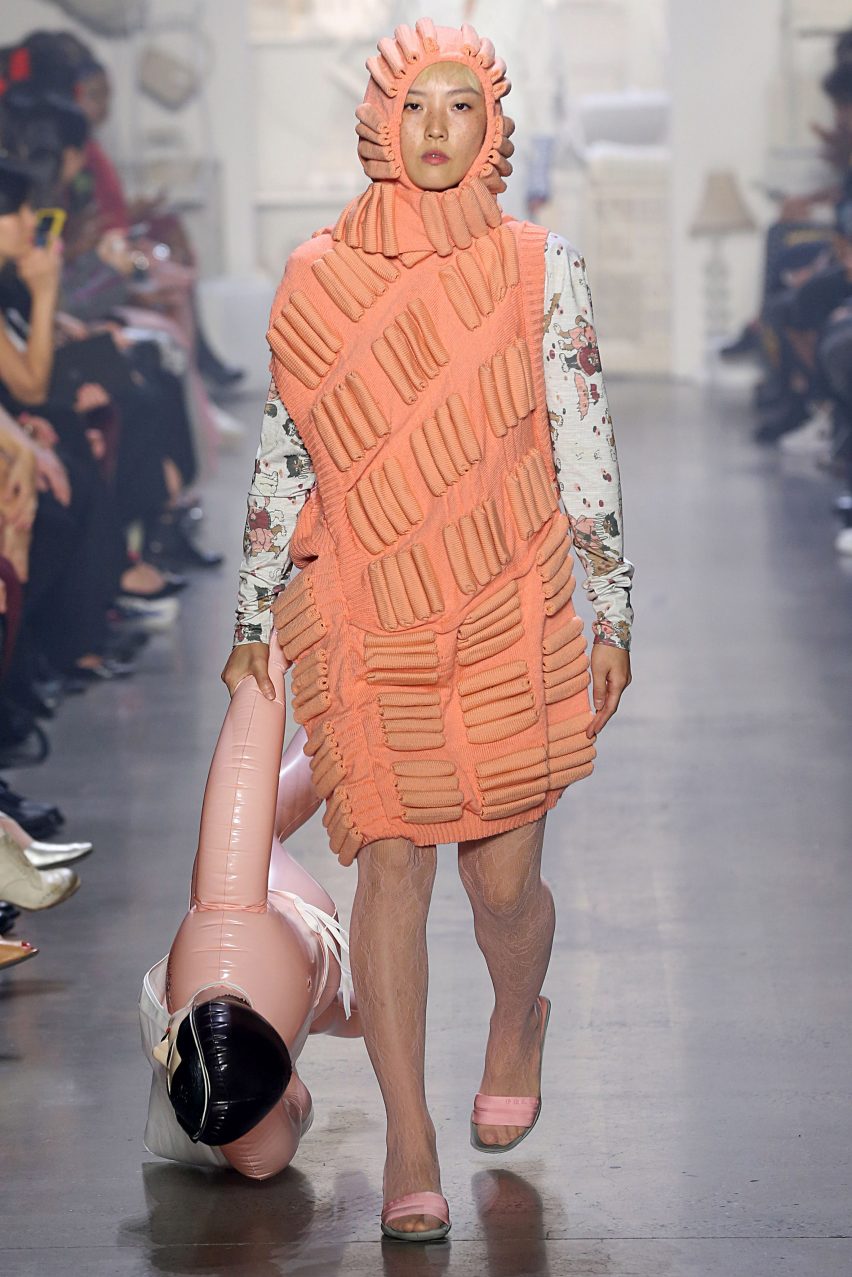
Yufei Liu
"Unfashionable Chinese daily wear" like puffer jackets, ill-fitting suits, grandma knits and plastic travel bags were given a new life by Yufei Liu.
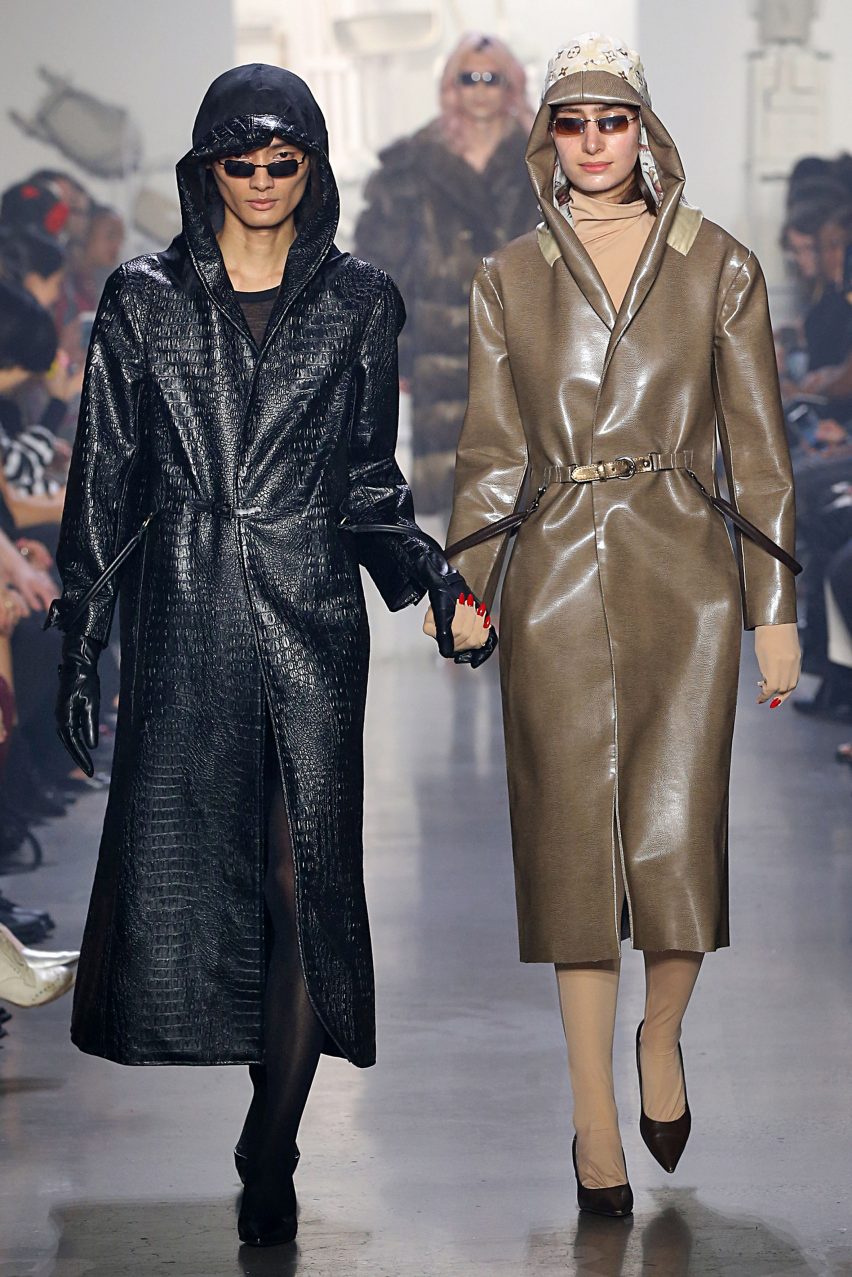
The fantastical collection included knitted dresses paired with shirts decorated in cartoons, a mangled knitted jumper, and a pair of Matrix-style rain coats worn inside out. A large blow-up doll also made an appearance.
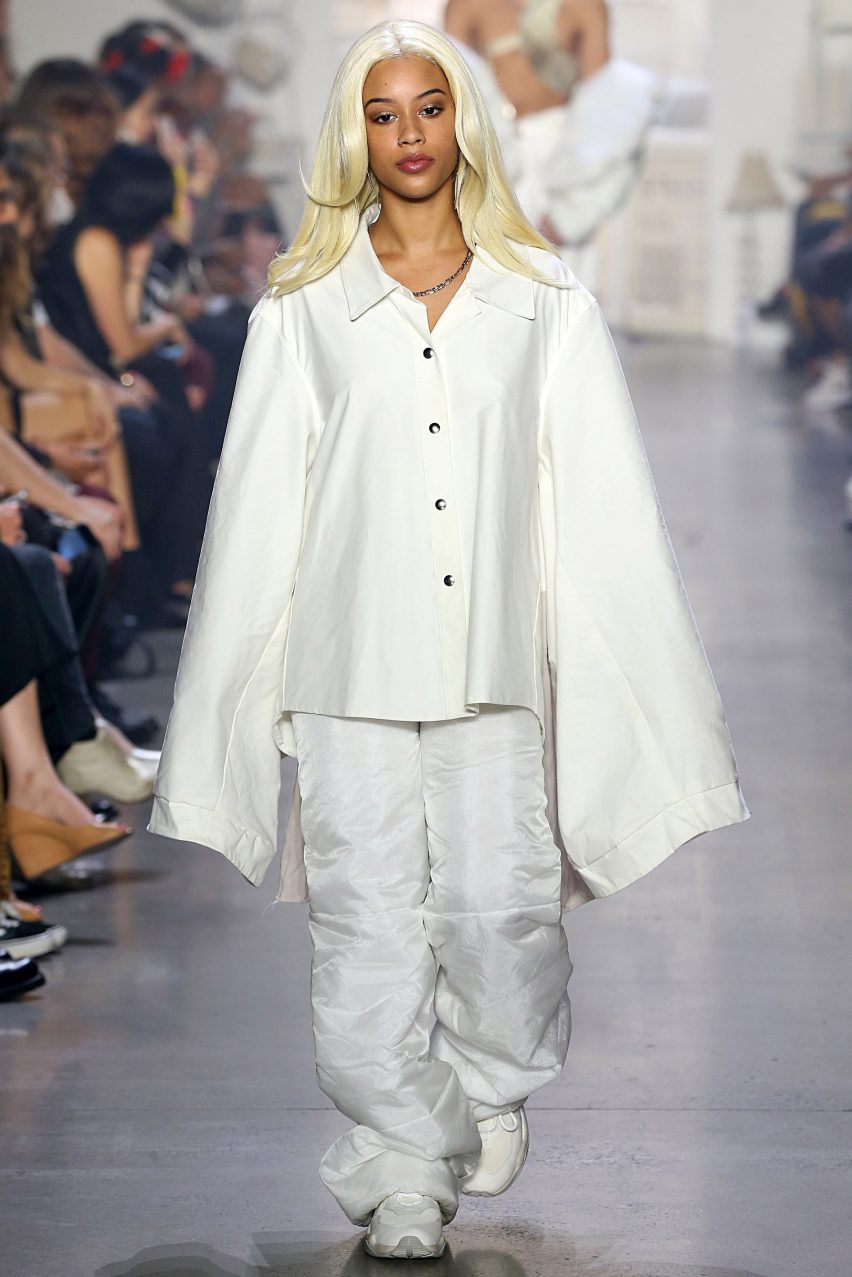
Fernando Flaquer
Fernando Flaquer similarly played with traditional pieces, but with the intention to disguise the wearer's silhouette. His works comprised checked puffer jackets, flowing white pyjama-like suits, and a top with a shirt attached to its front – recalling Balenciaga's T-shirt Shirt.
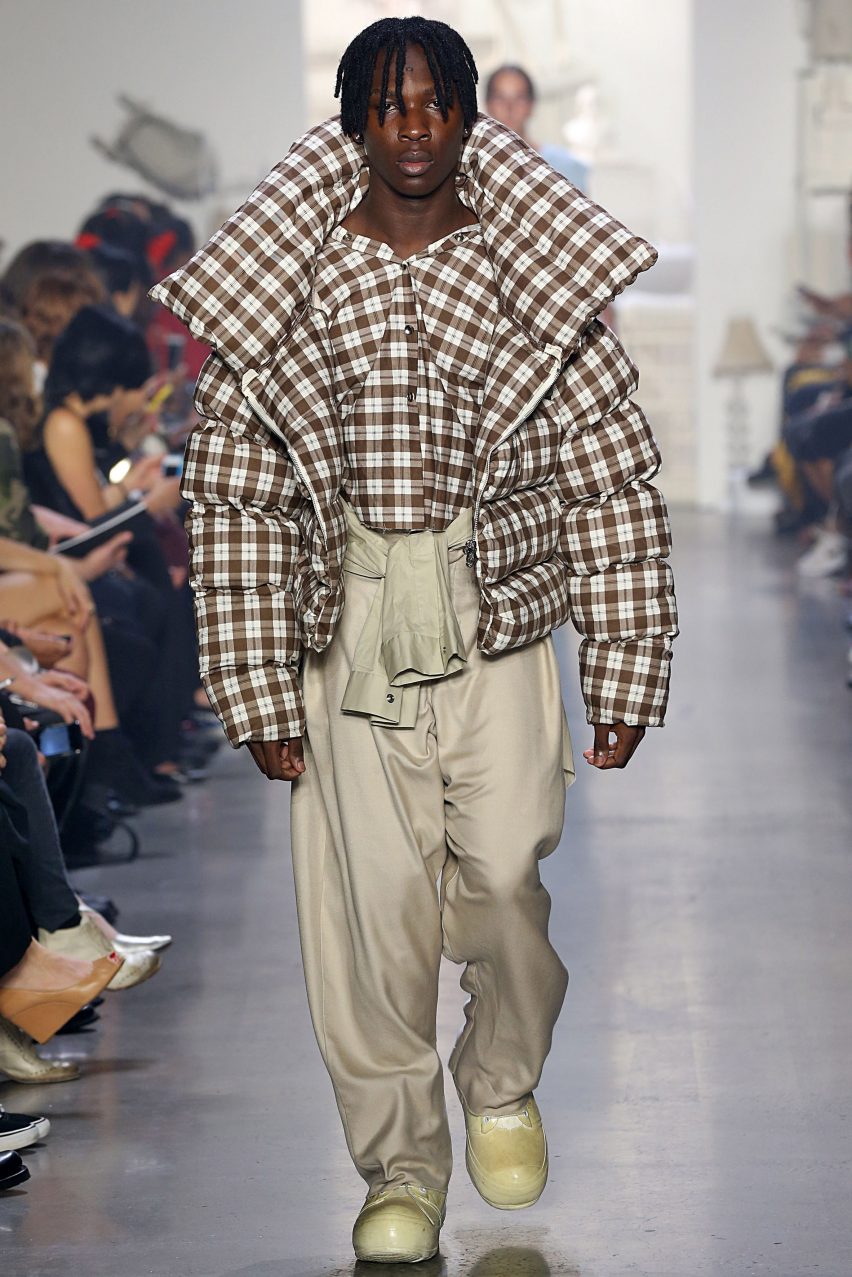
The designer said he drew influence from 1980s and 90s music, describing it as "a peak moment of self-expression combined with a futuristic attitude".
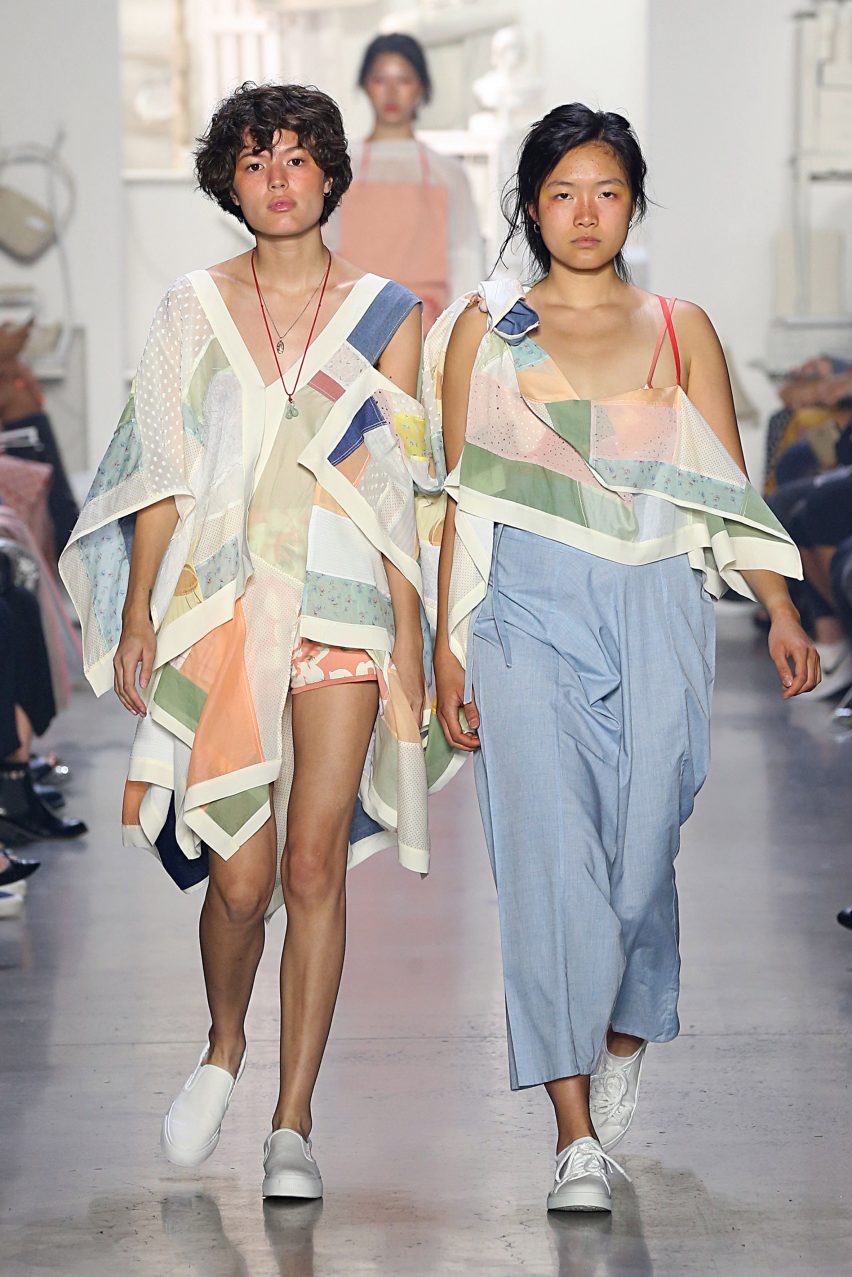
Ying Bonny Cai
Taking cues from East Asia, the playful womenswear created by Ying Bonny Cai featured bold colours and forms.
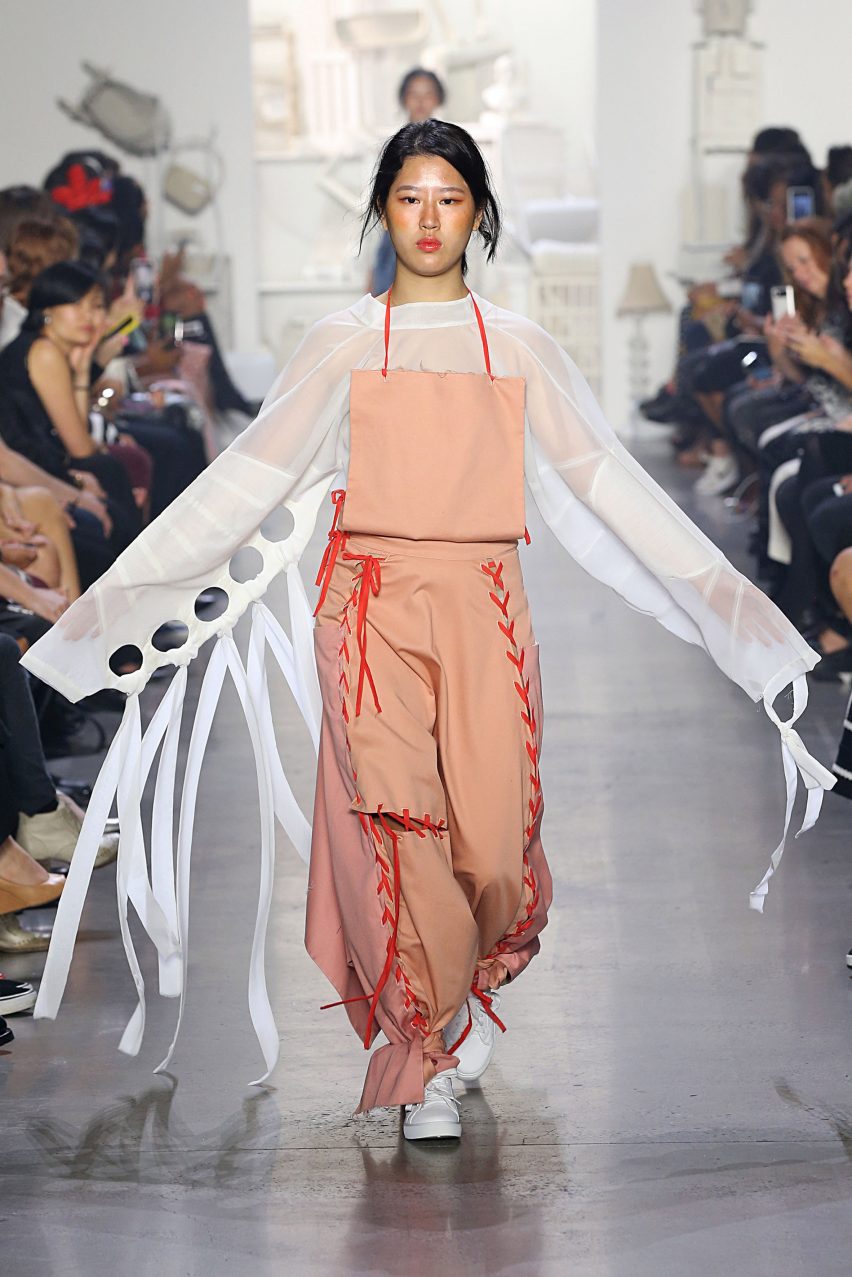
Shirts were decorated with long ribbons and skirts were covered with frayed denim – a material that was also patched together into a kimono. Red string tied together the sheer fabric of a see-through jumpsuit, while matching colour-blocked garments were used to dress twin models.

Michaela Wong Xing Yi
Michaela Wong Xing Yi chose a mix of sheer and rough, hairy and silky materials for her series of dresses.
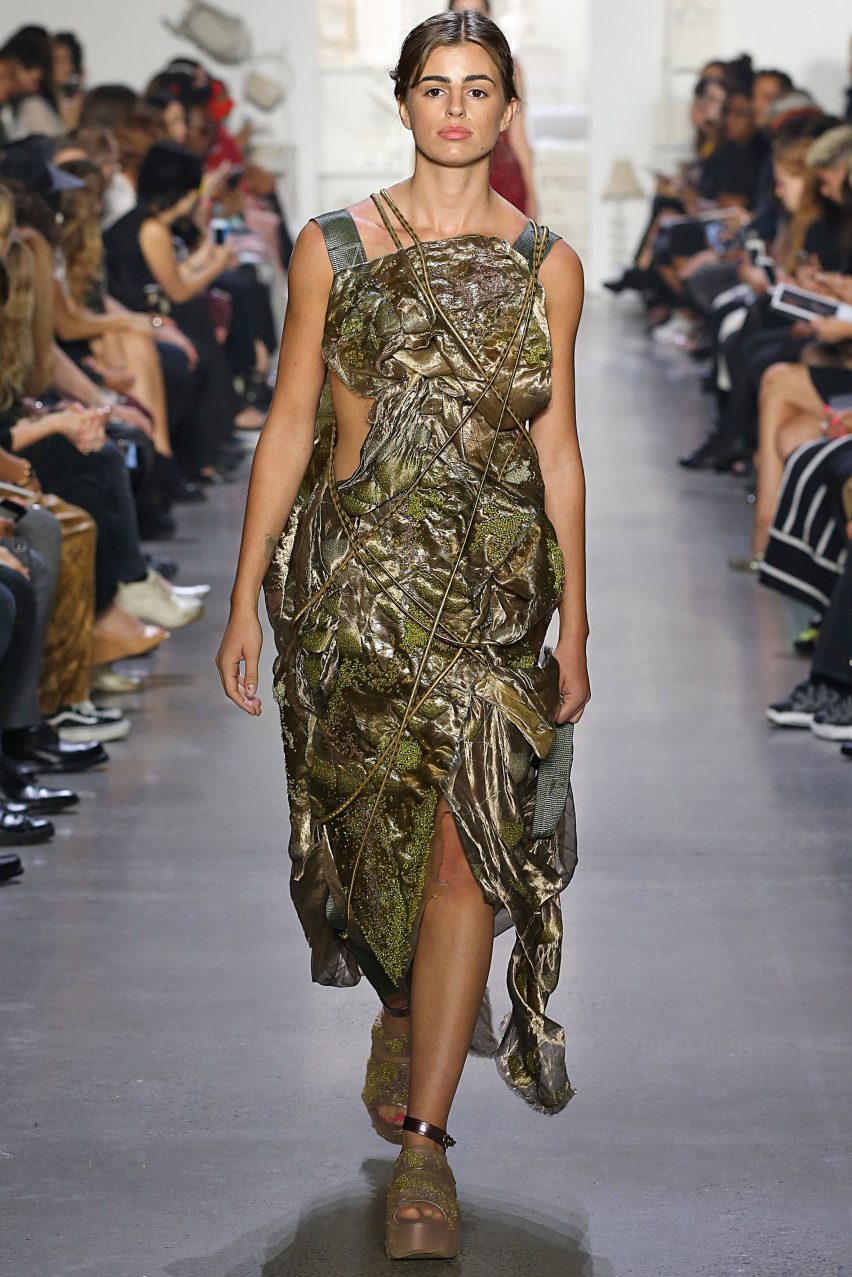
"I work with unusual materials and colour harmonies to create unique textures and visual fests," said Wong Xing Yi.
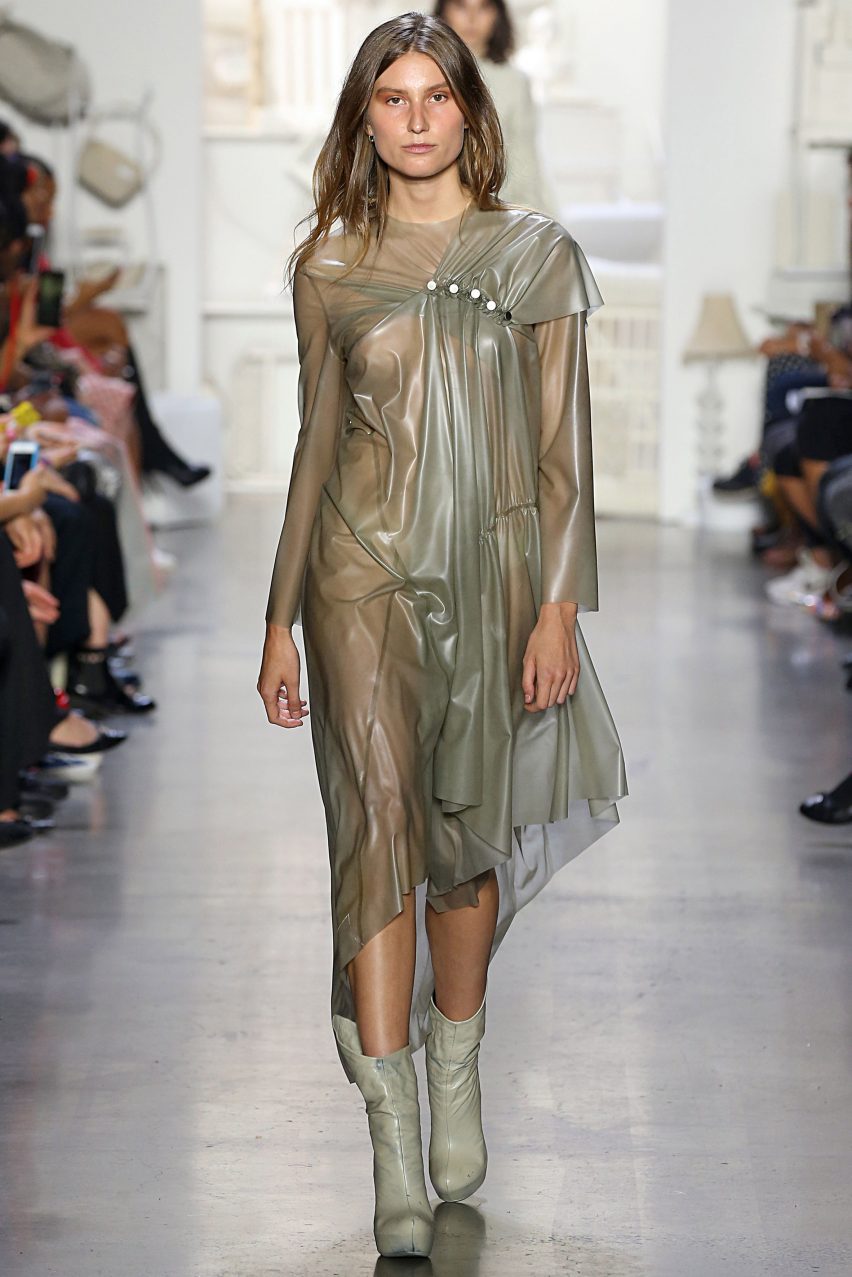
Rachel Wong
Among Rachel Wong's ephemeral designs were fluid plastic dress, pale gowns, and capes that created contrasting silhouettes.
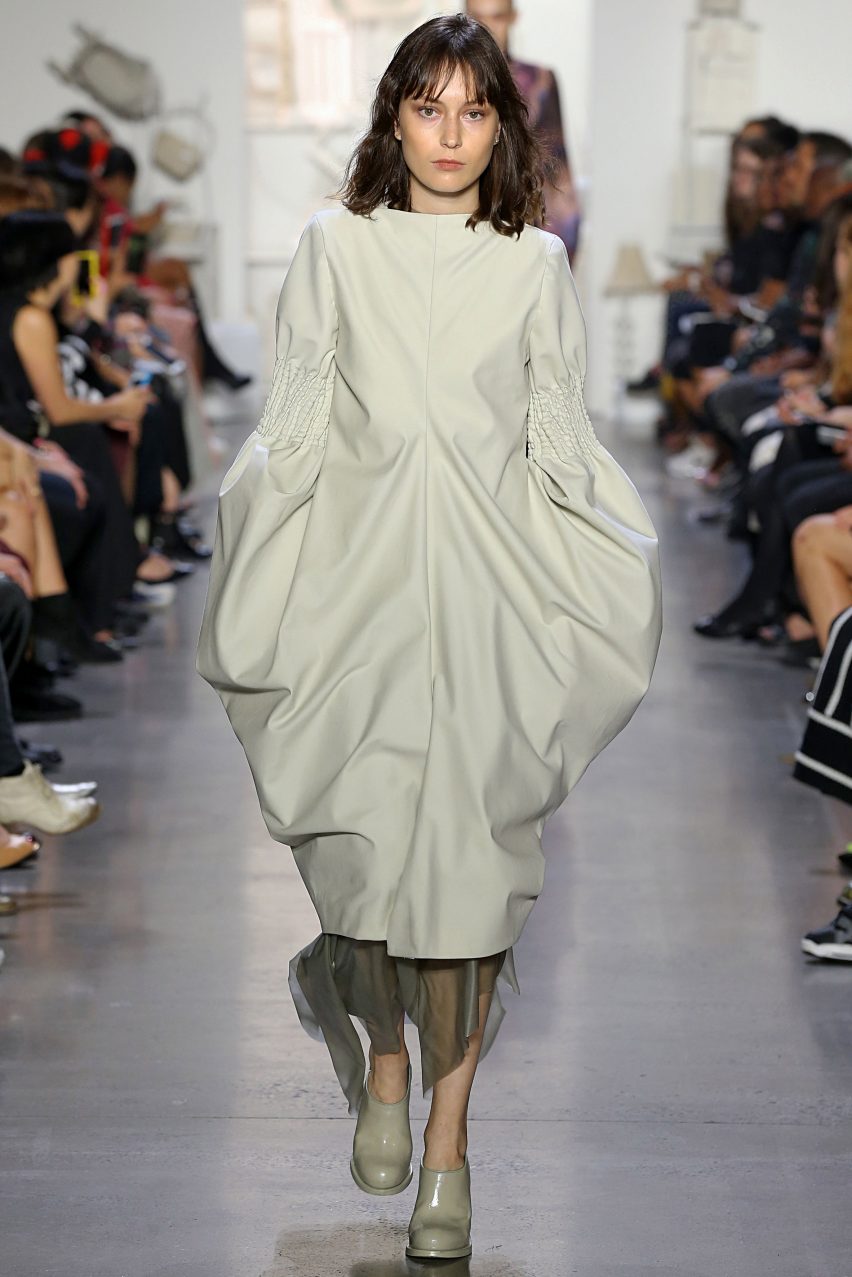
One design expanded at the hips and prevented models from using their arms, while another was wrapped tightly in bunched fabric.
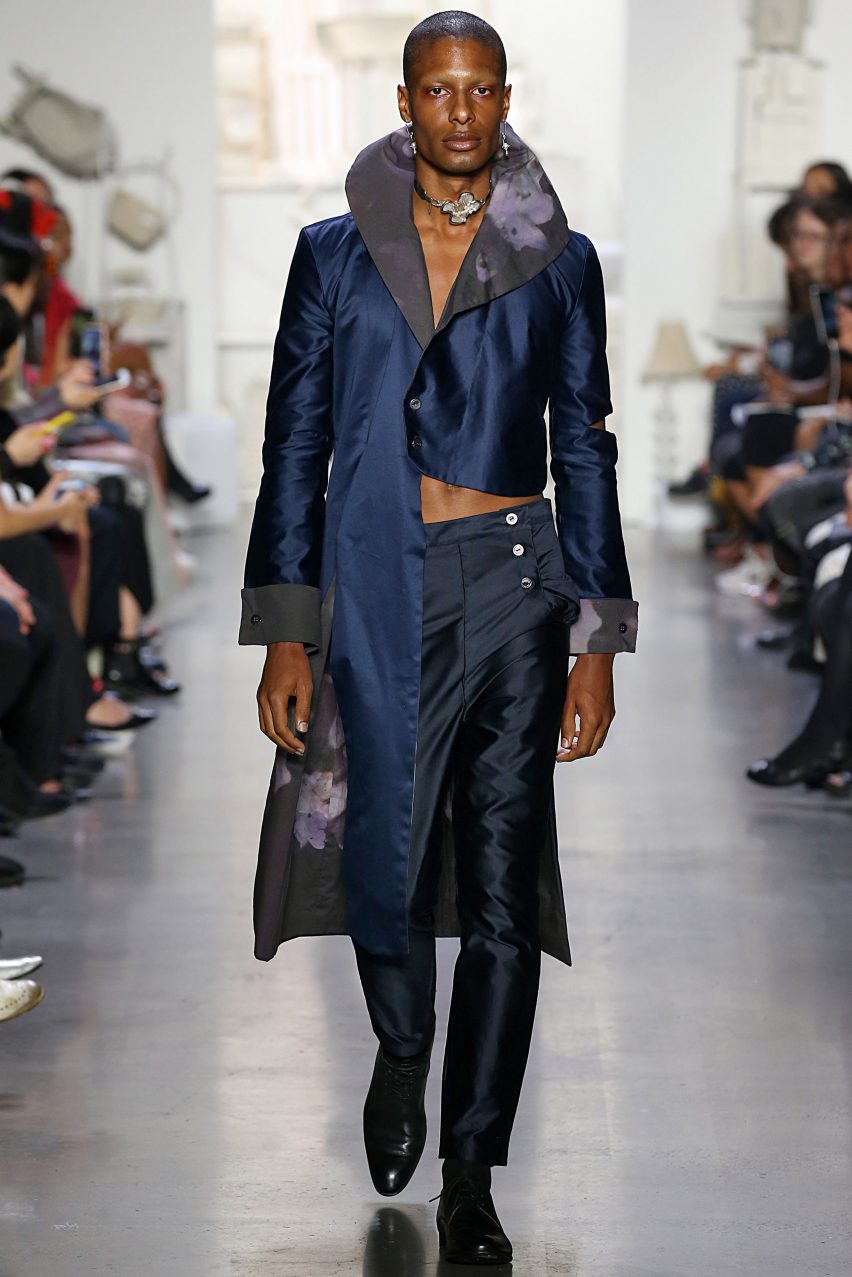
Xiaoyan Jiang
Xiaoyan Jiang aimed to feminise traditional men's suit designs with this collection, for which male models adorned floor-length coats, floral shirts and ruffle collars.
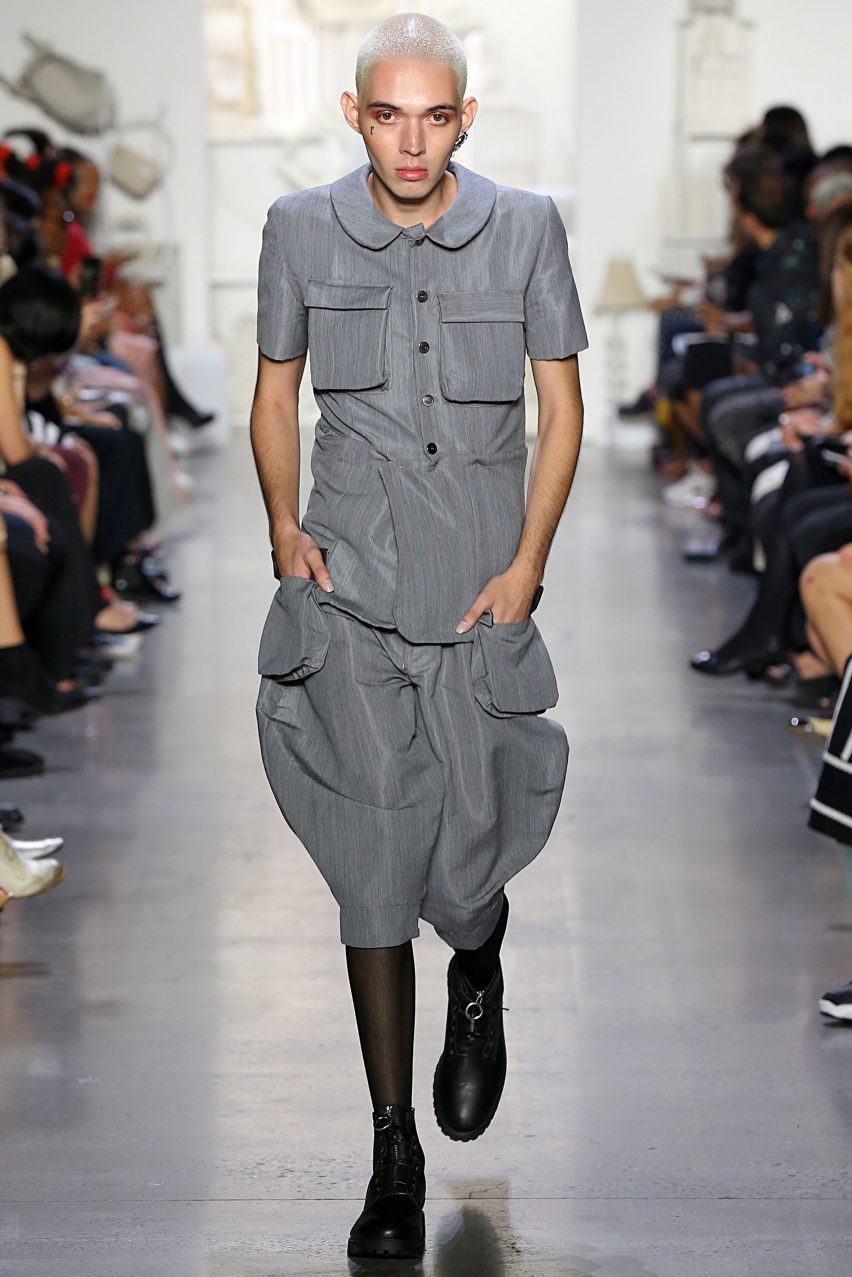
"For me, historical menswear, with its structured silhouettes and material choices, implies rigor and solemnity, evoking feelings of power," said Jiang. "This collection expresses the beauty of in-between genders within menswear."
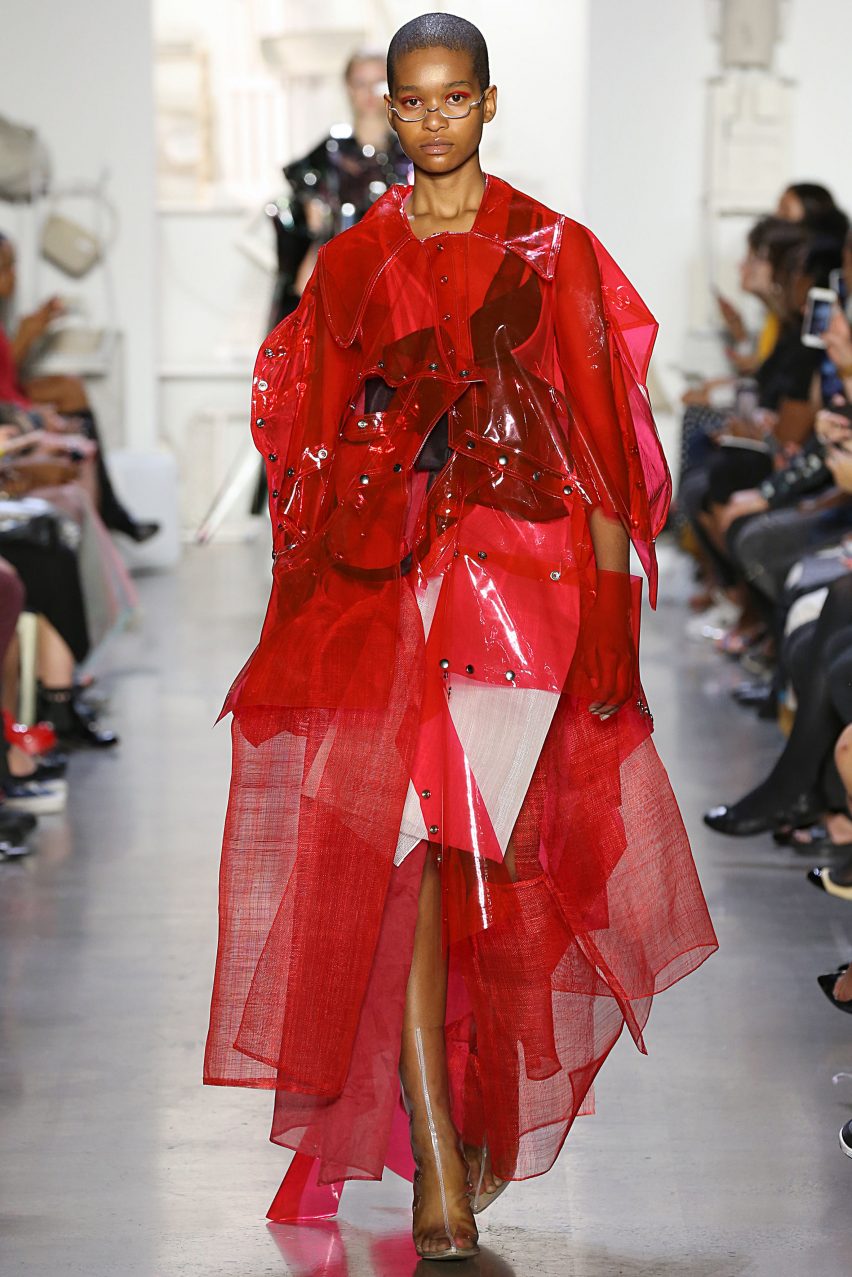
Zehua Crystal Wu
Transparent plastics were pieced together to creates coats, and layered over floral dresses and boots in Zehua Crystal Wu's designs.
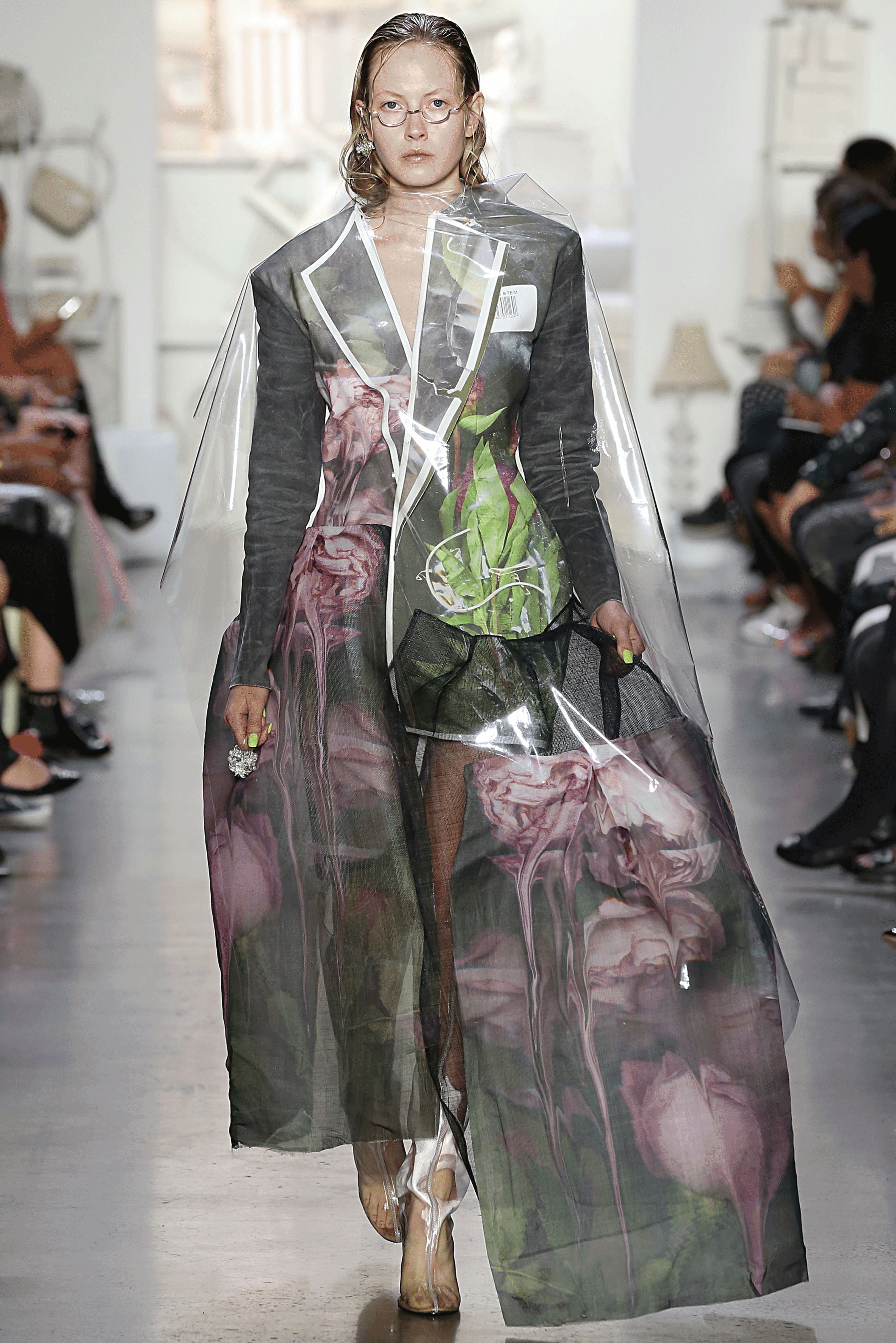
"By using see-through materials, I give the garment an X-ray luggage feeling to showcase multi-layers of stuff inside my suitcase," said the designer.
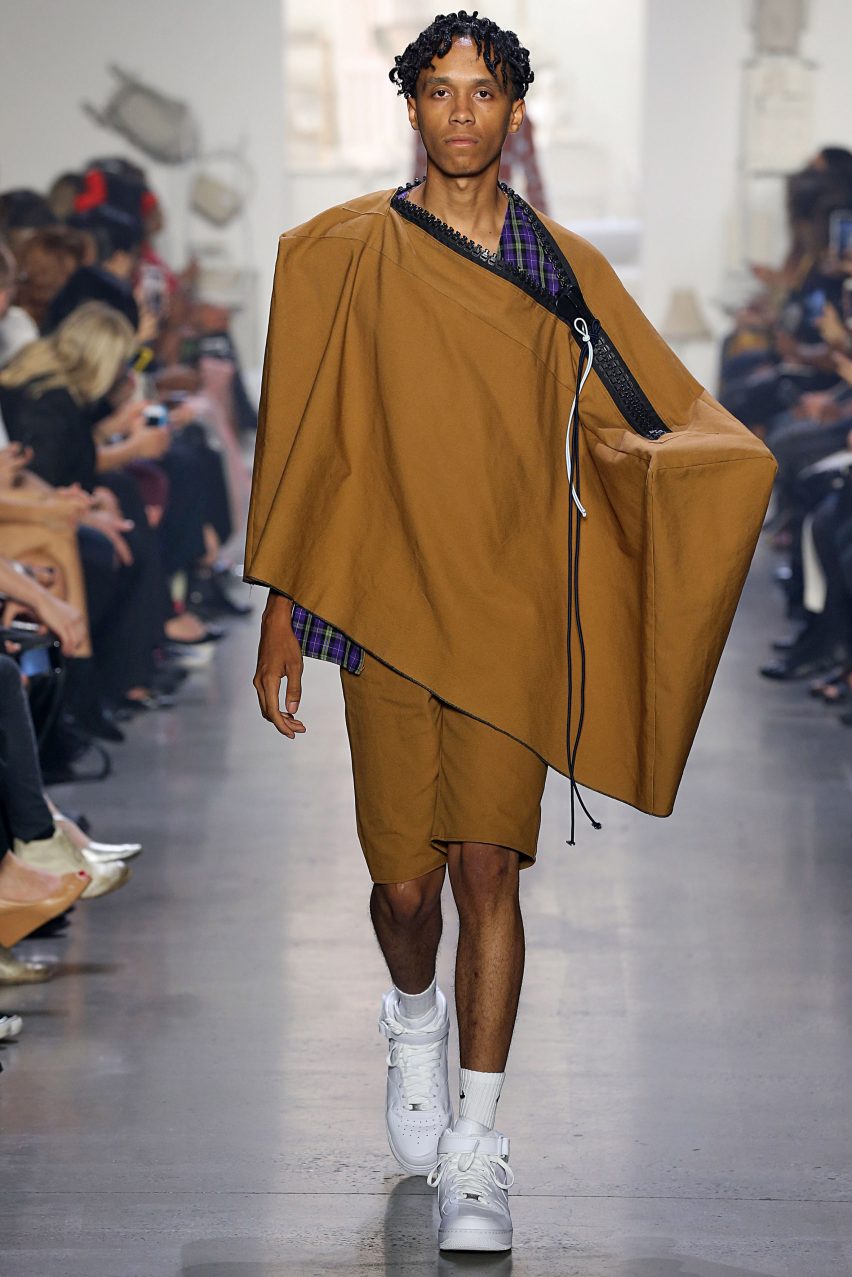
Matthew Streepy
Czech-American architect Bernard Rudofsky's "ideas of absurd or frivolous functionality" formed a reference for Matthew Streepy, who reinterpreted host of camping and workgear with huge zips, elastic chords or hooks, and oversized pockets.
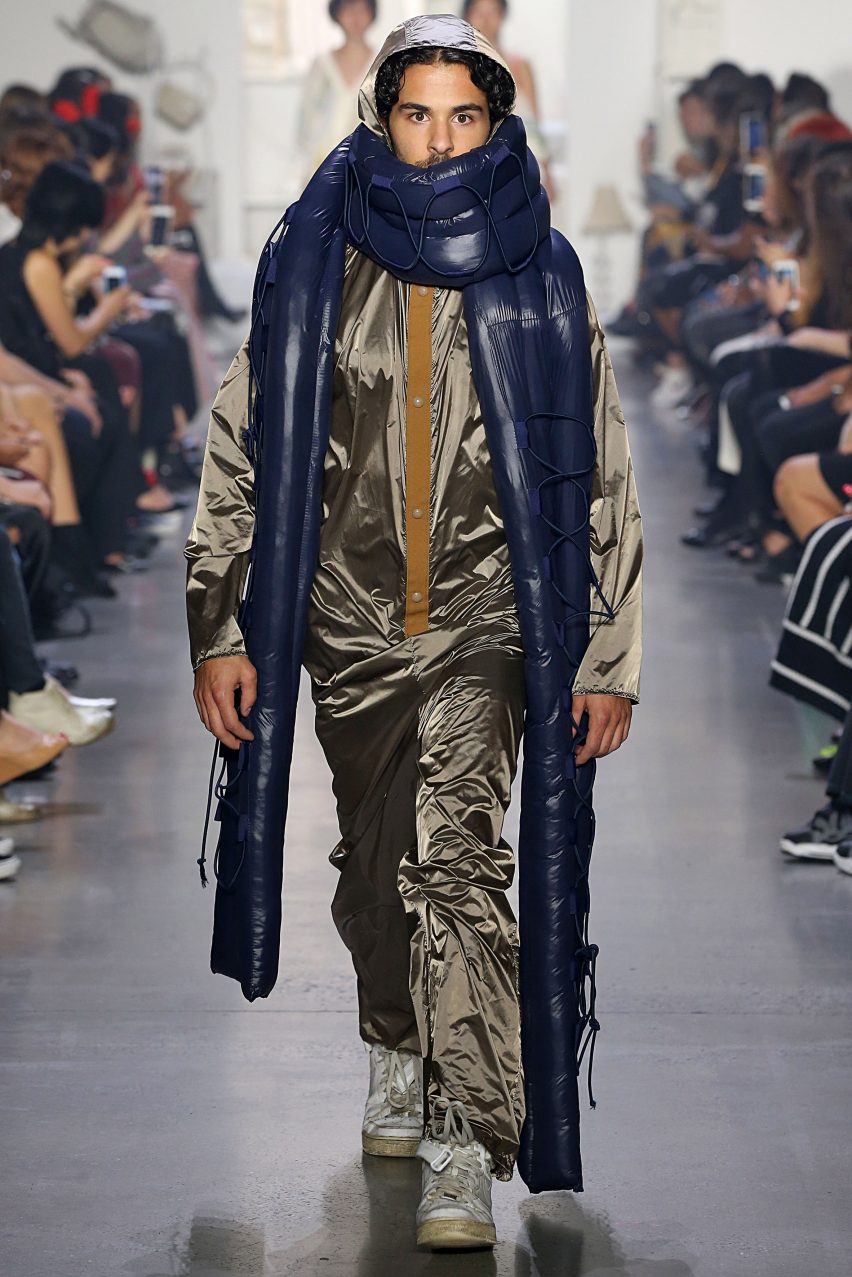
"The ways that pockets and other objects are used throughout the collection will produce garments that simultaneously include extra uses or functionality, while also being unnecessary or even hindering the wearer," he said.